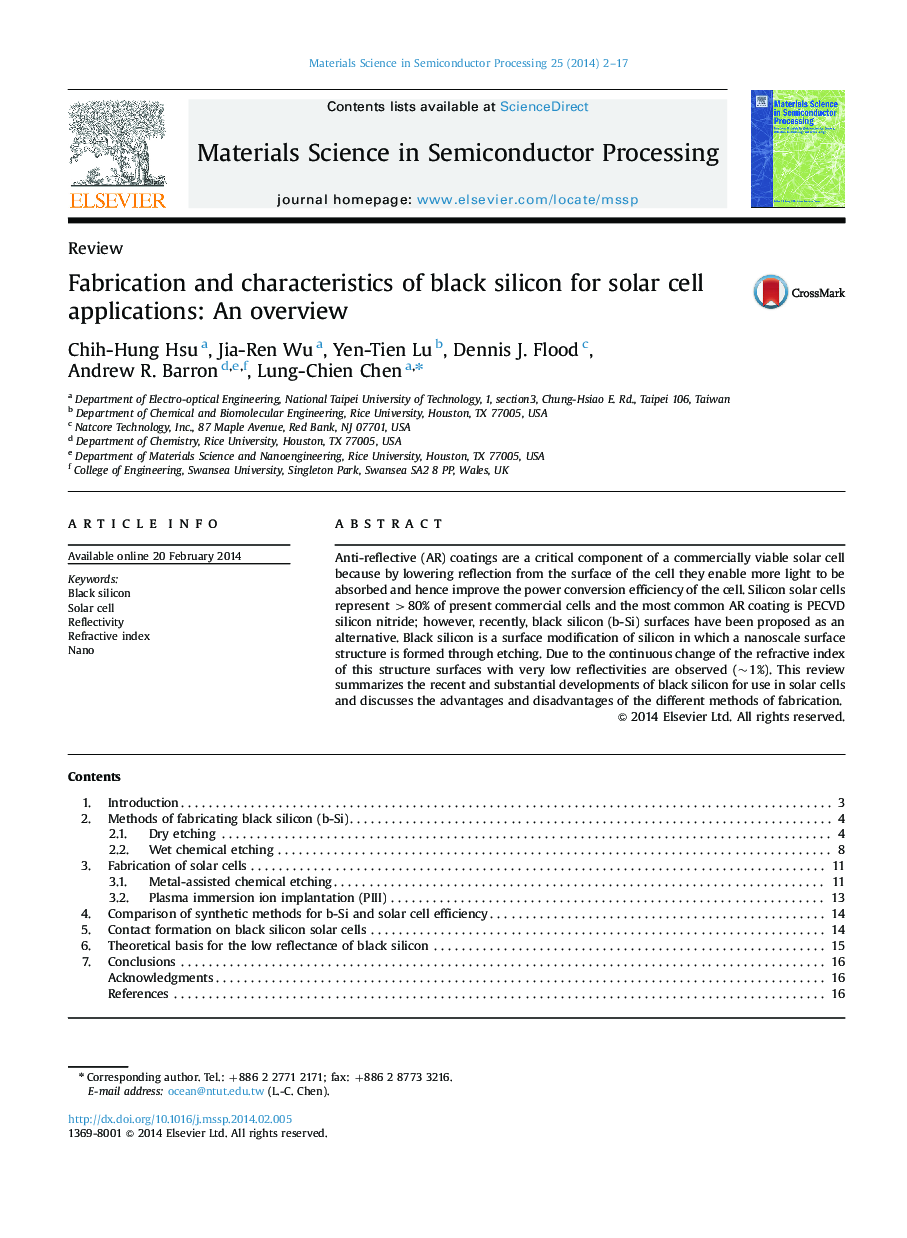| Article ID | Journal | Published Year | Pages | File Type |
|---|---|---|---|---|
| 728520 | Materials Science in Semiconductor Processing | 2014 | 16 Pages |
Anti-reflective (AR) coatings are a critical component of a commercially viable solar cell because by lowering reflection from the surface of the cell they enable more light to be absorbed and hence improve the power conversion efficiency of the cell. Silicon solar cells represent >80% of present commercial cells and the most common AR coating is PECVD silicon nitride; however, recently, black silicon (b-Si) surfaces have been proposed as an alternative. Black silicon is a surface modification of silicon in which a nanoscale surface structure is formed through etching. Due to the continuous change of the refractive index of this structure surfaces with very low reflectivities are observed (~1%). This review summarizes the recent and substantial developments of black silicon for use in solar cells and discusses the advantages and disadvantages of the different methods of fabrication.
